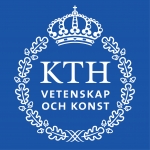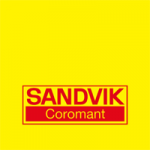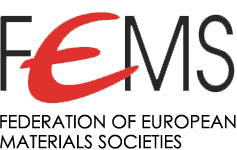During the FEMS Societies’ day, FEMS organised a Swedish Industry Forum, co-organised by SFMT, showcasing models for interactions and innovation with academia. 6 invited speakers from Swedish Industry and Academia were invited to give presentations to the FEMS General Assembly and guests on their research and collaboration routes. The event was seen as an opportunity to learn more about the way in which Sweden approaches its research and collaboration between industry and academia in case lessons can be learned which other organisations may find useful.
 Joydeep Dutta, chair of functional materials at the KTH Royal Institute of Technology(link is external), talked about the design and production of nanomaterials and self-organising nanomaterials with specific properties. The research aims to understand the basic relationships between the material’s chemical composition, morphological structure and its physical properties. Part of the activities are focused on the development of specific applications in nanotechnology with a focus on energy and the environment. The research teams develop nanomaterials for applications that create new solutions for sustainable development in society for example to reduce pollutants in air and water and to serve as alternative energy sources such as solar cells and the production of hydrogen. Prof. Dutta has written several text books including “Introduction to Nanoscience” and “Introduction to Nanoscience and Nanotechnology” (CRC Press of Taylor and Francis Group LLC).
Joydeep Dutta, chair of functional materials at the KTH Royal Institute of Technology(link is external), talked about the design and production of nanomaterials and self-organising nanomaterials with specific properties. The research aims to understand the basic relationships between the material’s chemical composition, morphological structure and its physical properties. Part of the activities are focused on the development of specific applications in nanotechnology with a focus on energy and the environment. The research teams develop nanomaterials for applications that create new solutions for sustainable development in society for example to reduce pollutants in air and water and to serve as alternative energy sources such as solar cells and the production of hydrogen. Prof. Dutta has written several text books including “Introduction to Nanoscience” and “Introduction to Nanoscience and Nanotechnology” (CRC Press of Taylor and Francis Group LLC).
 Gert Nilsson, technical director and head of research and education at Jernkontoret (link is external)(Swedish Steel Companies Association). Jernkontoret, by establishing a strategic research and Innovation agenda (SRIA), acts to strengthen the steel industry’s competitive position so that Swedish steel can continue to contribute to raising living standards. His talk focussed on describing their way of ensuring collaborative R&D. He was very emphatic about the need for mutual trust and close interactions for successful collaborations between academia and industry (see diagram below). In 2009-10 there was a need for a roadmap, the general feeling was that institutes and universities were running the show and they wanted to create a reference document. Vinnova asked businesses to put together strategic agendas to see where government could get the greatest ‘bang for the buck’, as a result we have produced a document on the “national action for metallic materials” – where they want to be in 2025, one goal is to open up the value chain. They have a plan, if you can help you’re welcome
Gert Nilsson, technical director and head of research and education at Jernkontoret (link is external)(Swedish Steel Companies Association). Jernkontoret, by establishing a strategic research and Innovation agenda (SRIA), acts to strengthen the steel industry’s competitive position so that Swedish steel can continue to contribute to raising living standards. His talk focussed on describing their way of ensuring collaborative R&D. He was very emphatic about the need for mutual trust and close interactions for successful collaborations between academia and industry (see diagram below). In 2009-10 there was a need for a roadmap, the general feeling was that institutes and universities were running the show and they wanted to create a reference document. Vinnova asked businesses to put together strategic agendas to see where government could get the greatest ‘bang for the buck’, as a result we have produced a document on the “national action for metallic materials” – where they want to be in 2025, one goal is to open up the value chain. They have a plan, if you can help you’re welcome
 Yngve Cerenius, Project coordinator at Max lab IV (link is external)(hosted by Lund University) for Swedish and European research and industry. MAX IV, one of the brightest synchrotron x-ray sources worldwide, came on stream at the end of 2016 and offers its capabilities to all fields of R&D in materials science and engineering. Lund has a history of providing world class synchrotron facilities for over 30 years.
Yngve Cerenius, Project coordinator at Max lab IV (link is external)(hosted by Lund University) for Swedish and European research and industry. MAX IV, one of the brightest synchrotron x-ray sources worldwide, came on stream at the end of 2016 and offers its capabilities to all fields of R&D in materials science and engineering. Lund has a history of providing world class synchrotron facilities for over 30 years.
 Nicholas Cervin, RISE Bioeconomy(link is external). RISE represents the cluster of the Swedish Research Institutes. In fact the RISE institutes Innventia, SP, and Swedish ICT have merged in order to become a stronger research and innovation partner. Through their international collaboration programmes with academia, industry, and the public sector, they ensure the competitiveness of the Swedish business community on an international level and contribute to a sustainable society. 2,200 employees support and promote all manner of innovative processes, and roughly 100 testbeds and demonstration facilities are instrumental in developing the future-proofing of products, technologies, and services. RISE Research Institutes of Sweden is fully owned by the Swedish state.
Nicholas Cervin, RISE Bioeconomy(link is external). RISE represents the cluster of the Swedish Research Institutes. In fact the RISE institutes Innventia, SP, and Swedish ICT have merged in order to become a stronger research and innovation partner. Through their international collaboration programmes with academia, industry, and the public sector, they ensure the competitiveness of the Swedish business community on an international level and contribute to a sustainable society. 2,200 employees support and promote all manner of innovative processes, and roughly 100 testbeds and demonstration facilities are instrumental in developing the future-proofing of products, technologies, and services. RISE Research Institutes of Sweden is fully owned by the Swedish state.



